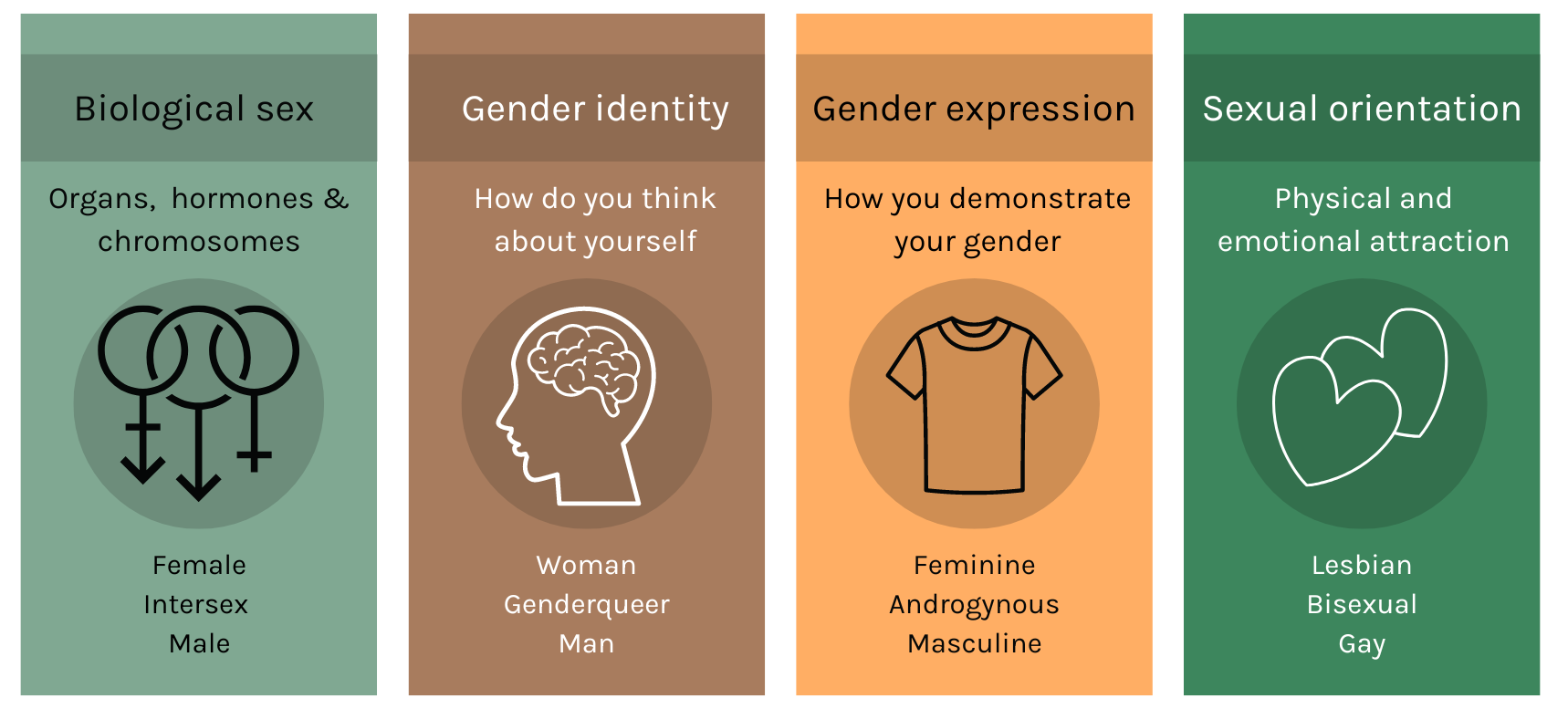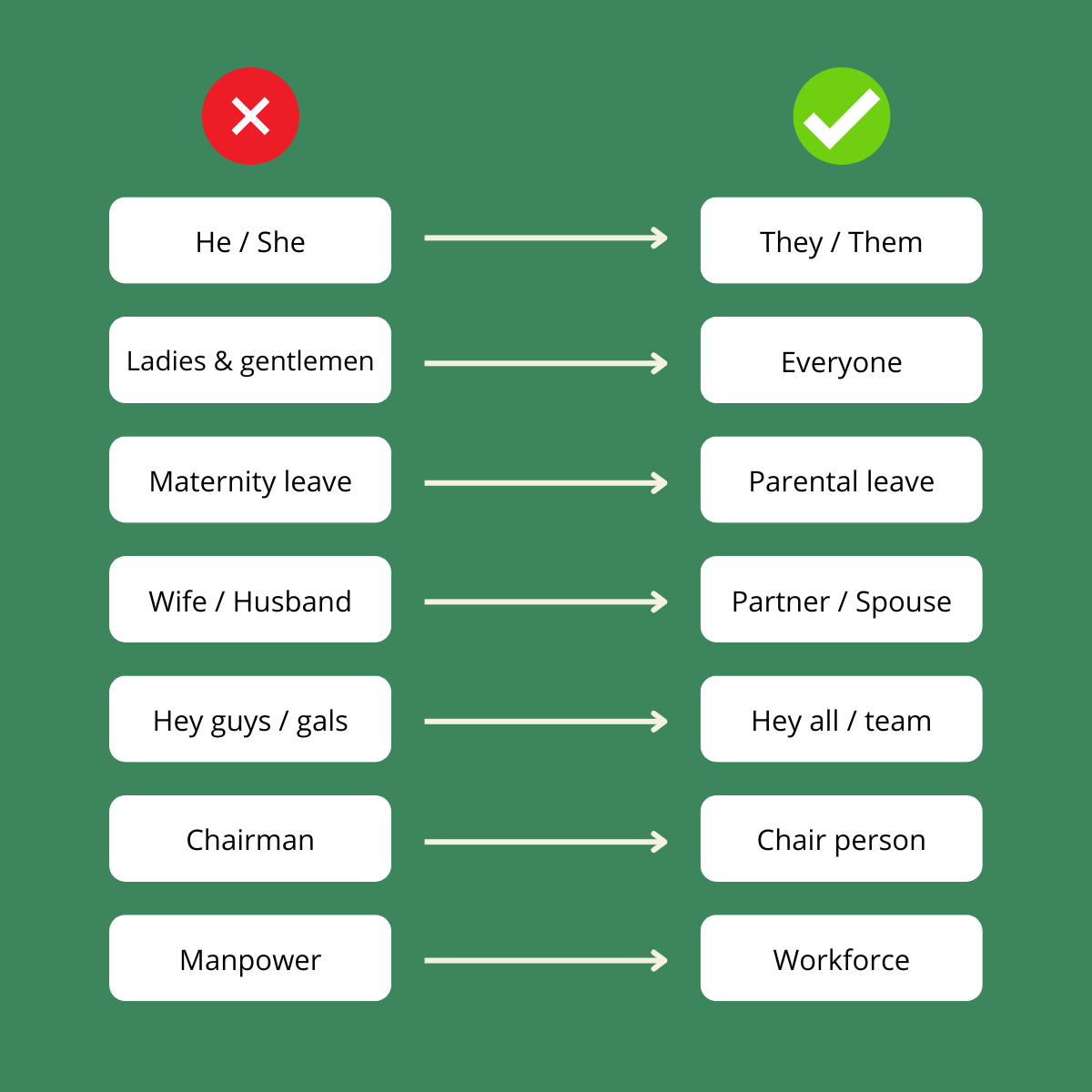Practicing constructive allyship that leads to tangible change for members of marginalized communities can be a challenging feat. Last month, the Inklusiiv Community held a Connect breakfast event hosted by our member organization, TEK. The event brought together people from our Member Community to unite around the topic of allyship. This blog will serve as a guide to constructive allyship by summarizing some of the key learnings and findings discussed by our Member Community.
What are Inklusiiv Community Connect events?
The Inklusiiv Community, made up of 30+ companies, holds a series of Connect events each year, which allow our members to meet in person to discuss various topics related to diversity, equity, and inclusion (DEI). Connect events are always hosted by one of our members to allow more opportunities for organizations to share their DEI learnings and growth. A one-and-a-half-hour program allows Community members to enjoy breakfast while learning from one another.
During our latest Connect event, we focused on how we activate our own constructive allyship and what our personal allyship journeys were like. As the host, TEK was also able to share their most recent DEI strides with the rest of the Community, allowing for a positive sharing of best practices. These efforts included conducting in-depth studies to better understand the experiences of gender and sexual minorities, implementing practical training programs for their employees, and organizing engaging events for their members. Master’s student, Sofia Saarinen, also presented their DEI Guide for students.
“I am really proud of how DEI issues have become mainstream in TEK’s activities and how many of my colleagues believe this work is really important.” ~Juhani Nokela, TEK
This Connect event was new in some ways, as we held a panel discussion for the first time. Recognizing the challenges individuals often face in navigating the realm of allyship and translating it into concrete actions, we believed that this format would provide valuable and relatable insights. Through the panel discussion, members openly shared their perspectives on what allyship means to them and recounted their personal journeys as allies. With tangible examples of the panelists’ allyship actions, the discussion aimed to reduce any initial apprehensions and demonstrate that engaging in allyship is more accessible than it may initially appear.
The panelists at this event were Juhani Nokela (TEK), Liam van Zyl (Fiskars Group), and Kia Haring (Tietoevry). The panelists’ insights shed light on the significance of allyship and offered valuable guidance on how organizations can effectively put allyship into practice.
The panel discussion was also an effective way to get other members who attended to reflect on their own allyship journey and experiences with allyship. Following the panel, we engaged in group discussions, where participants had the opportunity to delve deeper into the following questions:
- How can organizations ensure allyship is not performative and is instead a genuine commitment to supporting marginalized groups?
- How do you navigate the balance between being an ally and ensuring that you are not speaking over marginalized individuals or groups?
- Have you ever encountered resistance or pushback from colleagues or superiors when advocating for marginalized individuals or groups? How did you address and navigate those challenges?
- How do you balance being an ally with self-care and avoiding burnout? What strategies or practices do you employ to ensure your own well-being while continuing to support others?
So what were some key takeaways about allyship from this event?
What is allyship and what is it not?
Allyship can look different in different situations. It may involve intervening in uncomfortable or discriminatory scenarios, or simply asking marginalized individuals what support they require. But it always means you are actively listening and ensuring that colleagues from marginalized communities feel heard and acknowledged.
When you are an active ally, you are making a promise to continuously educate yourself on the historical context and the present-day realities faced by marginalized groups. Educating yourself can help you learn how to best take action to support and defend marginalized individuals or groups by advocating for their rights, challenging discriminatory practices, and creating inclusive spaces.
However, constructive allyship should not center on your own struggles and experiences. While everybody has faced challenges in their life, allies must reflect on their privileges to understand that these individual hardships do not stem from systemic or structural barriers that perpetuate inequity.
“I think the most important thing to remember is that allyship is not about you – don’t speak for the group you ally with, your role is to boost the visibility of the work they are currently doing and to provide unconditional solidarity.” ~Liam van Zyl, Fiskars Group
Allyship is also not about performative actions. It is a long-term commitment to fighting for justice, even when the news cycle has moved on and the cameras have stopped rolling. It can be easy to get swept up into social media movements where information is constantly being shared and reposted, but it can be just as easy to stop when the initial momentum dies down. Genuine allyship endures beyond trending movements, historical months (e.g., Pride Month), or convenient circumstances. Active allyship is a continuous set of actions.
Constructive allyship is needed to create change
Change does not happen by itself; allies are needed to advocate for changes within an organization’s practices and policies. Oftentimes, the systems that are in place may be inequitable but do not get questioned because they work well for the majority group. People from marginalized groups may recognize these systemic barriers but are not in a position where they can advocate for change. Therefore, allies are important because they help shine a light on injustice and provide a platform that helps uplift marginalized voices.
Allyship also needs to exist on all levels. Awareness of the need for DEI change is necessary overall. Leaders within organizations also need to practice allyship to make sure that they are not only listening to others but also are questioning policies, practices, and structures that are inequitable. Constructive allyship must also be intersectional. Intersectionality means that people have multiple, overlapping identity factors, and therefore the experiences of people from a certain marginalized group will vary.
“Allyship is needed on all levels – awareness and inclusion on team level but also on corporate level to drive the change through policies, processes and structures, which is not happening by itself – but by passionate allies driving the work” ~Kia Haring, Tietoevry
Sustainable DEI change requires a cultural shift within organizations. Allyship is a powerful driver of this change. When individuals within an organization actively engage in allyship, it sets a precedent for others to follow suit. This ripple effect inspires more employees to understand the importance of inclusion and actively contribute to the organization’s DEI efforts. Over time, this collective commitment to constructive allyship drives a cultural transformation where diversity, equity, and inclusion become embedded in the organization’s values and practices.
What is LGBTQ+ allyship?
As LGBTQ+ allyship was one of the focuses of the Connect event, it’s important to highlight how allyship for different communities will likely look different as well.
LGBTQ+ allyship is specific to those who are part of the queer community. Queer is often used as an umbrella term to describe people who are gender and sexual minorities. It is important to note that the word “queer” to some people is not just being someone from a gender or sexuality minority group, but is a critical and political identity that challenges the assumption that heterosexual and cisgender people are the norm. In order to be an ally to the LGBTQ+ community, it’s important to understand who you are being an ally to and strive to use the correct terminology.
Here is a list of the most common terms and their definitions that all LGBTQ+ allies should understand:
Queer: An umbrella term used to describe individuals who identify as not exclusively heterosexual and/or not exclusively cisgender. It is a term reclaimed by the LGBTQ+ community and can be used by individuals to express their non-normative sexual orientation or gender identity.
LGBTQ+: An acronym that stands for Lesbian, Gay, Bisexual, Transgender, and Queer (or Questioning) individuals. The “+” symbolizes the inclusion of other diverse sexual orientations and gender identities within the community.
Sexual Orientation: A term that refers to an individual’s enduring pattern of emotional, romantic, and/or sexual attractions to men, women, both genders, or neither gender. Common sexual orientations include gay, lesbian, bisexual, pansexual, and asexual, among others.
Gender Identity: An individual’s deeply-held sense of their own gender, which may or may not align with the sex assigned at birth. Common gender identities include male, female, non-binary, genderqueer, and genderfluid, among others.
Cisgender: A term used to describe individuals whose gender identity aligns with the sex assigned to them at birth. For example, someone who was assigned female at birth and identifies as a woman is cisgender.
Transgender: An umbrella term for individuals whose gender identity differs from the sex assigned to them at birth. Transgender individuals may transition socially, medically, or both to align their gender expression and identity.
Gender Expression: How individuals outwardly express their gender identity through behavior, clothing, hairstyle, or other forms of presentation. It can be masculine, feminine, androgynous, or any other combination.
Heteronormativity: The assumption that heterosexuality is the default or norm in society. It reinforces societal expectations and norms that prioritize and value heterosexual relationships and marginalizes other sexual orientations.
Homophobia: Prejudice, discrimination, or hatred against individuals who are attracted to people of the same sex. Homophobia can manifest as personal bias, systemic discrimination, or acts of violence.
Biphobia: Prejudice, discrimination, or erasure directed towards individuals who identify as bisexual or experience attraction to more than one gender.
Transphobia: Prejudice, discrimination, or hostility towards transgender individuals. Transphobia can manifest in various ways, including denial of gender identity, misgendering, and violence.
Non-Binary: An umbrella term for individuals whose gender identity does not exclusively align with male or female. Non-binary individuals may also identify as a combination of genders or reject the concept of gender altogether.
Preferred Pronouns: Pronouns are the words used to refer to a person in place of their name. Preferred pronouns are what an individual chooses to use to affirm their gender identity. It is important to respect and use a person’s preferred pronouns when referring to them.
Ally: A person who supports and advocates for the rights and well-being of LGBTQ+ individuals. Allies are typically not part of the LGBTQ+ community themselves but work to create inclusive environments and challenge heteronormativity and discrimination.
Intersectionality: The recognition that individuals’ experiences and identities are shaped by the intersection of various social categories such as race, gender, sexuality, class, and ability. Intersectionality highlights the importance of understanding the unique experiences of individuals who face multiple forms of oppression and discrimination.
Remember that language and terminology can evolve, and individual preferences may vary. It’s always important to listen, respect, and use terminology preferred by individuals when referring to their identities as the best form of allyship.

Why it’s important to practice LGBTQ+ allyship year round
The LGBTQ+ community faces high levels of discrimination in the workplace, with a 2021 study by the Williams Institute revealing that 46% of LGBT workers have experienced unfair treatment in the workplace at some point in their lives, and 38% of LGBT workers have experienced harassment at work. This leads to LGBT workers covering or masking their true identity at work, which can mean changing their physical appearance, using a different bathroom or avoiding using the bathroom, and altering their voice or mannerisms. Additionally, 50.4% of LGBT workers are not out to their supervisor and 25.8% of LGBT workers are not out to anyone from work at all. This demonstrates the importance of allyship for LGBTQ+ individuals in the workplace.
Active allyship throughout an organization creates an atmosphere of trust and psychological safety so that LGBTQ+ employees feel safe to be themselves without fear of discrimination or harassment. Here are some tangible actions you can take to get you started:
- Share your pronouns, for example in your email signature or Slack profile. This lets others know that you are someone they can share their pronouns with as well, especially if they are not cisgender.
- Make sure you are using inclusive language. Inclusive language removes heteronormative assumptions and makes sure to address everyone.
- Challenge existing policies, practices, and structures that may discriminate against LGBTQ+ employees.
- Be an advocate for LGBTQ+ rights and push for inclusive policies and benefits within your organization. For example, petition for comprehensive anti-discrimination measures, or advocate for inclusive healthcare coverage that supports transgender individuals.
- Encourage the implementation of gender-neutral restrooms and dress codes.
These are just a few examples of how you can use your voice and platform to create positive change for your LGBTQ+ colleagues.

Where to go from here: tips for how to get started
Allyship is a constant, active effort that requires action and vigilance year round. For example, many allyship efforts that take place during the month of June never come to fruition because people forget to follow through with their actions after Pride Month ends. Marginalized communities exist and face challenges and discrimination every month of the year. Therefore, make sure to advocate for the implementation of inclusive policies in your organizational structure to ensure they are in place year round.
Remember, constructive allyship is a continuous learning journey and the best way to start your own allyship journey is by broadening your perspectives and ways of thinking. Reading about the experiences of marginalized groups can allow you to reflect on your own privileges and experiences in comparison to these groups. Below you will find a list of books, articles, and podcasts that can help you to understand why allyship is necessary and how you can be a better ally.
Books:
- “So You Want to Talk About Race” by Ijeoma Oluo
- “White Fragility: Why It’s So Hard for White People to Talk About Racism” by Robin DiAngelo
- “How to Be an Antiracist” by Ibram X. Kendi
- “Blindspot: Hidden Biases of Good People” by Mahzarin R. Banaji and Anthony G. Greenwald
- “Invisible Women” by Caroline Criado Perez
- “The Neurodiverse Workplace” by Victoria Honeybourne
Articles:
- Ideas TED article: How to be an ally in the workplace: 13 ways to do it by Melinda Briana Epler
- Salesforce article: How you can be an active ally by Isabel Gonçalves
- Forbes article: 6 Ways To Be An Authentic Ally At Work by Holly Corbett
Podcasts:
- “The Diversity Gap” by Bethaney Wilkinson
- “The Broad Experience” by Ashley Milne-Tyte
- “Code Switch” by NPR

